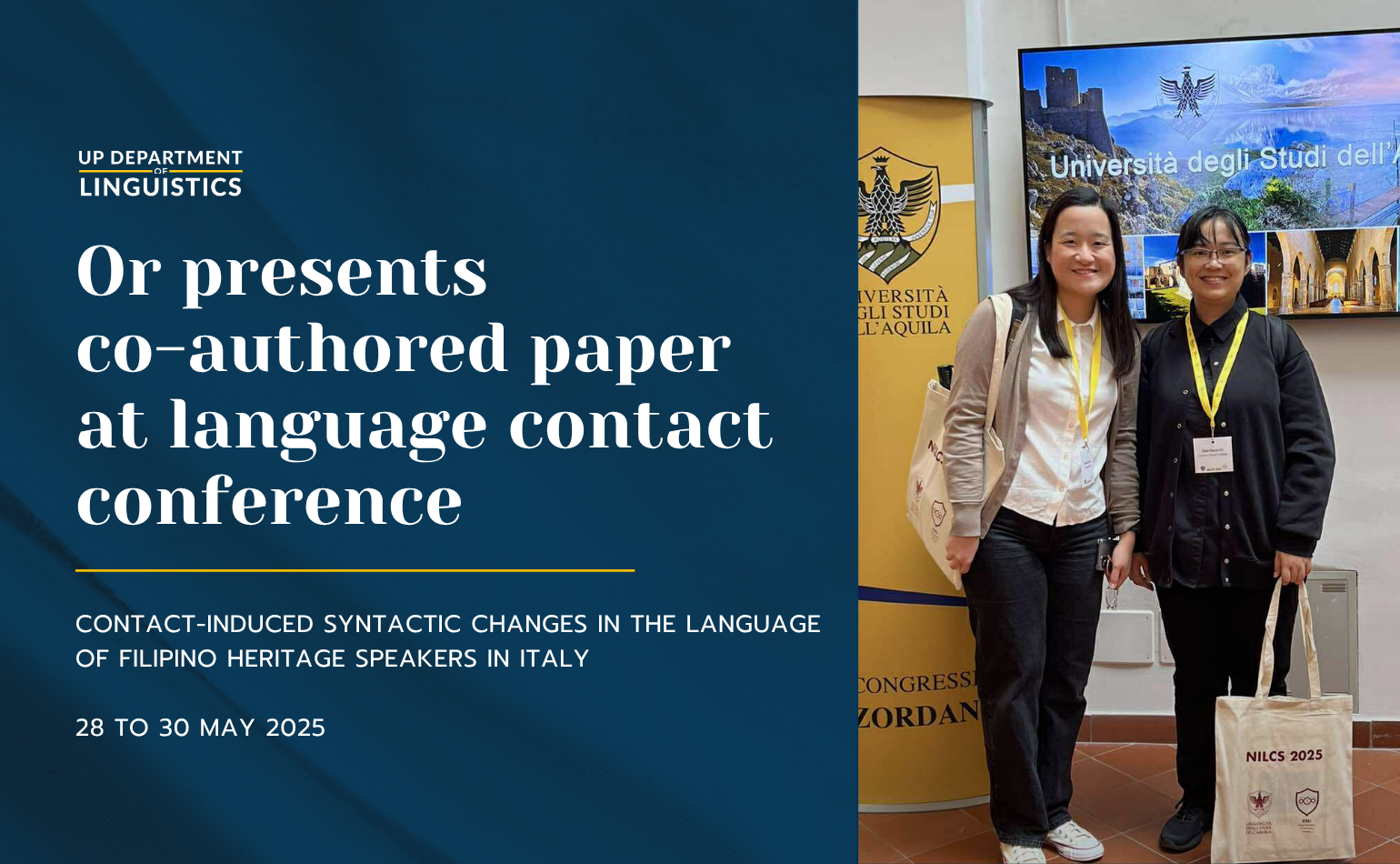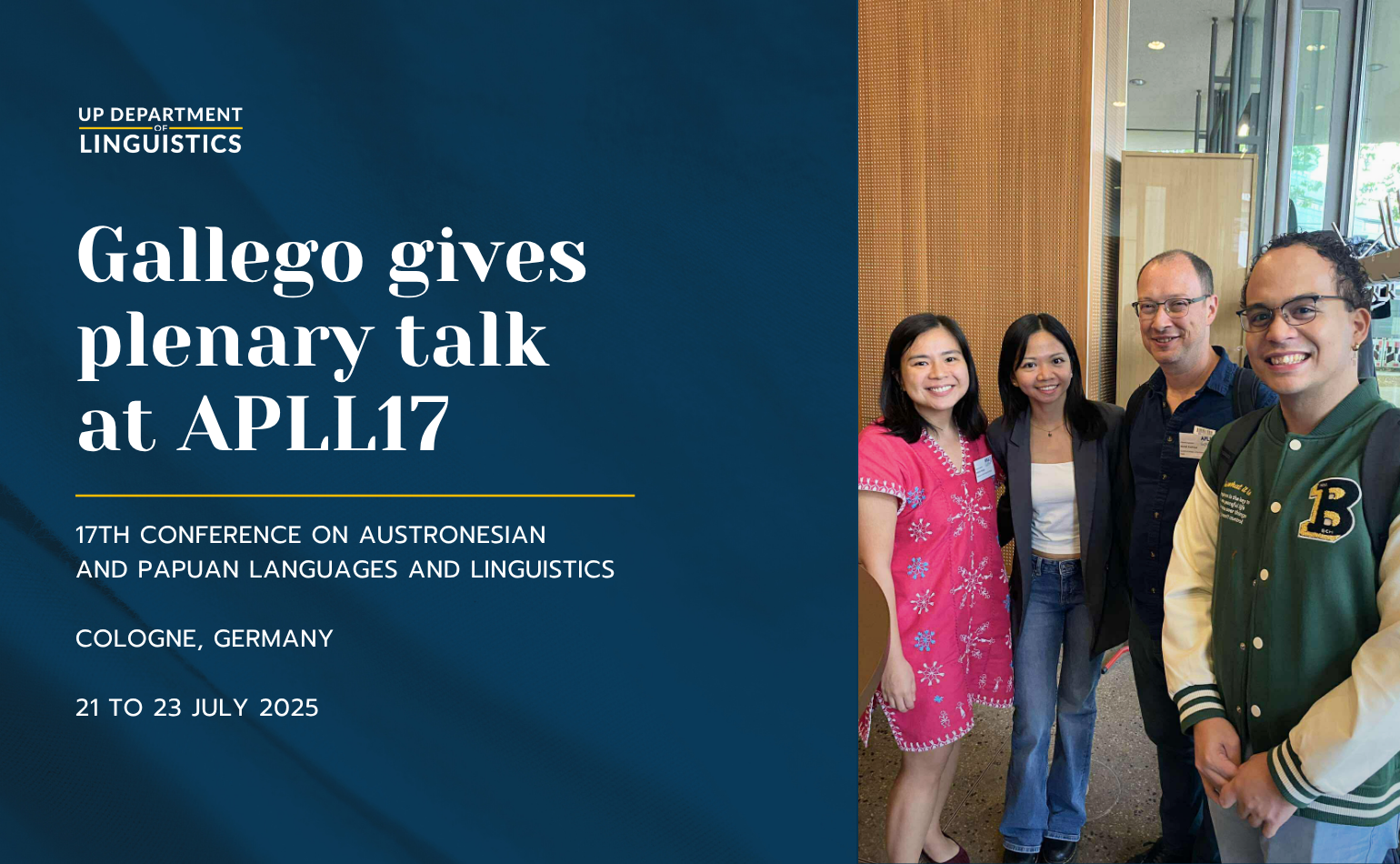
Asst. Prof. Elsie Marie Or presented her co-authored paper, “Contact-induced syntactic changes in the language of Filipino heritage speakers in Italy,” at the International Conference on New Issues in Language Contact Studies at the University of L’Aquila last 28-30 May 2025. The study is written with Francesca R. Moro and Gina Russo of the University of Naples – L’Orientale (UNIOR).
The abstract of the presentation may be read below:
Contact-induced syntactic changes in the language of Filipino heritage speakers in Italy
The present research deals with contact-induced changes in the language of Filipino heritage speakers in Italy. They are second generation individuals, who speak Italian, Filipino, English (see Moro & Russo 2024). In this paper, we conduct an investigation on two target domains: word-order and voice, as these domains are vulnerable to contact in heritage settings (Ronquillo 2015; Tanaka et al. 2019; Polinsky & Scontras 2020).
Filipino has a flexible word order with a preference for verb-initial order (VAP or VPA) and patient voice (Cooreman et al. 1984); while Italian has a less flexible system with a preference for verb medial order (AVP) and active voice.
We collected data from a group of 66 speakers: 28 second generation (G2) speakers, 32 first generation (G1) immigrants who were not born or raised in Italy, but immigrated during adulthood, and 6 homeland speakers. We employ the same methodology and video elicitation stimuli of Tanaka et al. (2019) in order to allow for a cross-diasporic comparison (Bondoc et al. 2018). The pairs of clips are meant to elicit transitive constructions with different voice marking, such as There are a boy and a girl, the boy lifts the girl.
Preliminary results show that, with respect to word order, G2 speakers differ significantly from G1 speakers as they use more verb medial constructions such as the one in (2), while G1 speakers
prefer verb initial ones (1) (The model was significant χ²(4) = 59,881, p < 0.001). This is likely due to transfer form the dominant language Italian.
V A P
(1) Binuhat ng batang lalake ang batang babae
PV-carry NSBJ child man SBJ child woman
‘The boy lifted the girl’. (G1 speaker)
A V P
(2) Yung batang lalaki binuha yung babae
thatchild man PV-carry that woman
‘The boy lifted the girl’. (G2 speaker)
The preliminary results show no statistically significant difference between G1 and G2 in the use of patient voice and actor voice. Therefore, the word order domain seems to be more vulnerable to language contact than voice. We hypothesize that this may be due to the fact that the patient voice is the unmarked one in Filipino (acquired very early and more frequent, Garcia & Kidd 2020), and that there is no similarity between the Filipino (five voices) and Italian (two voices) systems, which blocks cross-linguistic transfer.
Or also met with BA Lingg (2018) alum Patricia Camus, who is currently a PhD student of Linguistics at the Université Paris Cité. Or is currently working towards her PhD degree at UNIOR, while Camus is set to be a visiting research fellow at the Department in August to September 2025.
Published by UP Department of Linguistics



